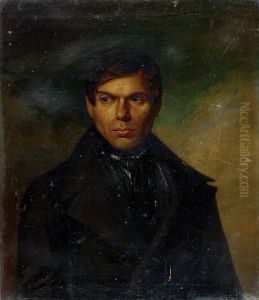Louis Lohde Paintings
Louis Lohde was a German-American artist, primarily known for his landscape paintings. Born in 1829 in Germany, Lohde received his initial art education in his home country before emigrating to the United States. He settled in the Midwest, where the vast landscapes and natural beauty of the region greatly influenced his work.
In America, Lohde became part of the art community that was burgeoning in the Midwest during the 19th century. His landscapes often depicted the rolling hills, rivers, and forests of states like Missouri and Illinois. He was known for his ability to capture the light and atmosphere of these settings, a skill that garnered him appreciation among art patrons and fellow artists of the time.
Lohde's works are characterized by their meticulous detail and vibrant colors. He had a particular talent for rendering the changing seasons, with many of his paintings featuring the rich hues of autumn or the delicate greens of spring. Despite this, he never gained the same level of fame as some of his contemporaries, and many of his works were only recognized posthumously.
Throughout his career, Lohde exhibited his paintings in various venues, including local art fairs and exhibitions. He was part of the artistic movement that saw America's natural beauty as a subject worthy of fine art, at a time when the country was still establishing its cultural identity separate from Europe.
Lohde passed away in 1902, leaving behind a body of work that captures the American landscape in a time of significant change and development. While he may not be as well known as other artists of his era, his paintings continue to be appreciated for their contribution to the genre of American landscape painting and for their historical value in representing the 19th-century Midwest.
